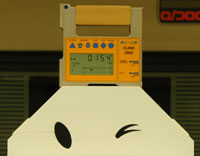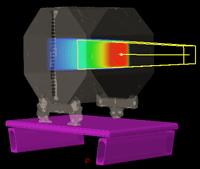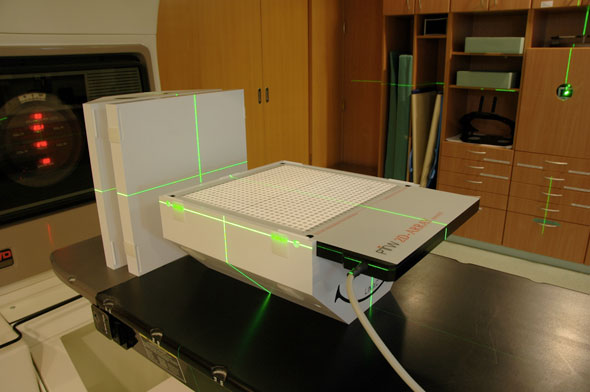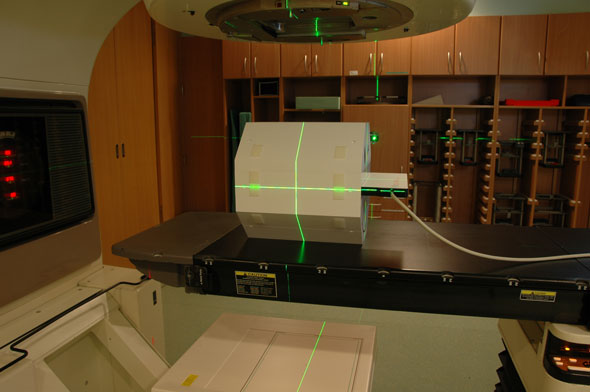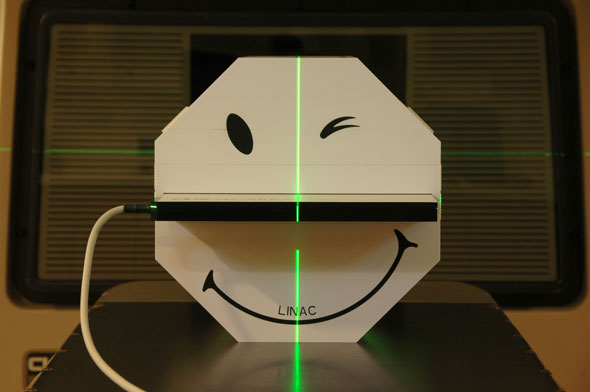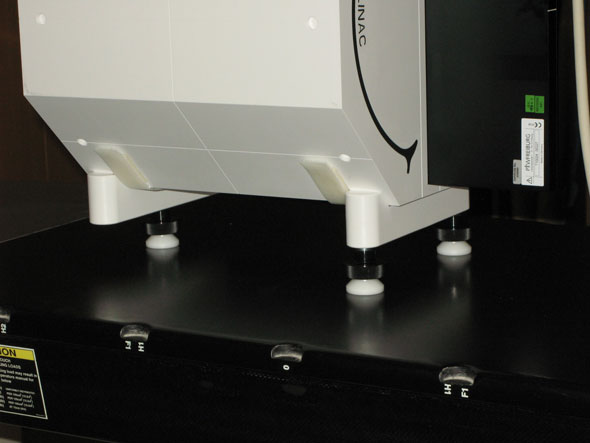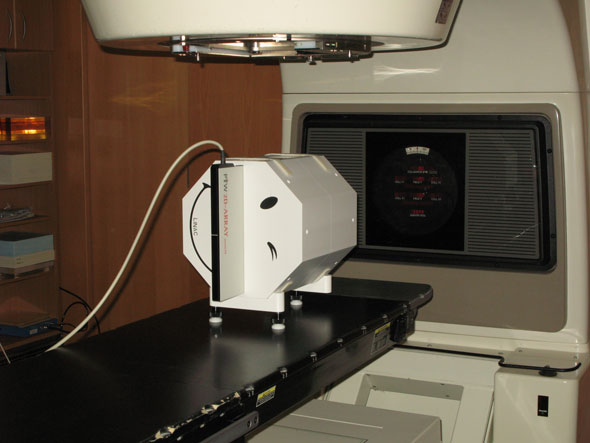We first put everything on the couch and take care that the couch is centered laterally. We do not want to shift the couch in the lateral direction to align Octavius, because then the couch rails would also be shifted. This is not an issue during perpendicular field-by-field verification, but here it is. The couch needs to be centered, and then Octavius needs to be centered on the couch!
The ARRAY is put in the cut-out slab, and some basic alignment is done. The ARRAY interface should be switched on as soon as possible, so the system can warm up.
After the parts are put together, Octavius can be aligned with the lasers. If the couch is level (or rather: if the longitudinal inclination is the same on the linac couch and on the CT couch!), Octavius can be used without "feet":
The small air gap which is visible in the next photo right above the ARRAY will be explained elsewhere.
Octavius has feet which makes it possible to align the phantom very precisely (the feet can be used in all eight possible orientations):
Here is a setup with the ARRAY rotated by 90°. In this case, the feet should be used, because otherwise Octavius would rest on the velcro strips (maybe it's ok, but we never tried it out):
Needless to say: if this setup is chosen, the CT scan also has to be performed with the feet included. During measurements they will not be in the beam, but if the geometry is not consistent, the distance between phantom and couchtop will be different.
Most of the time, the unrotated orientation is chosen, where setup is straightforward, quick and easy. Handling the 24 kg phantom when you are alone in the late afternoon (the physicists typical situation) requires some skills, especially when the phantom's feet should also be included in the setup.
This is a phantom for real men (and strong women), not for weaklings!
The dosimetric performance is discussed here.
